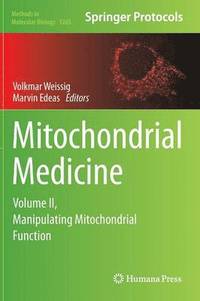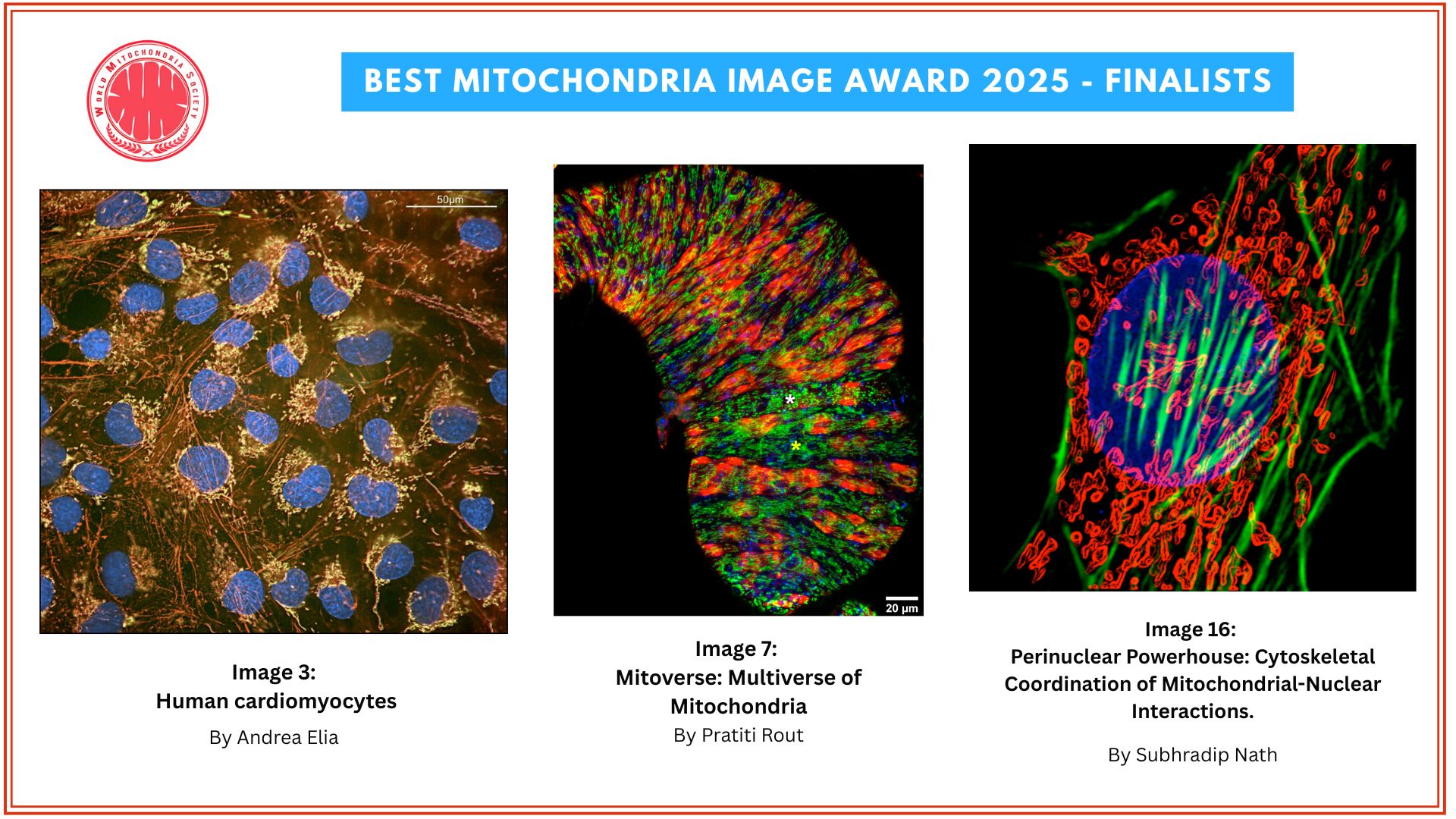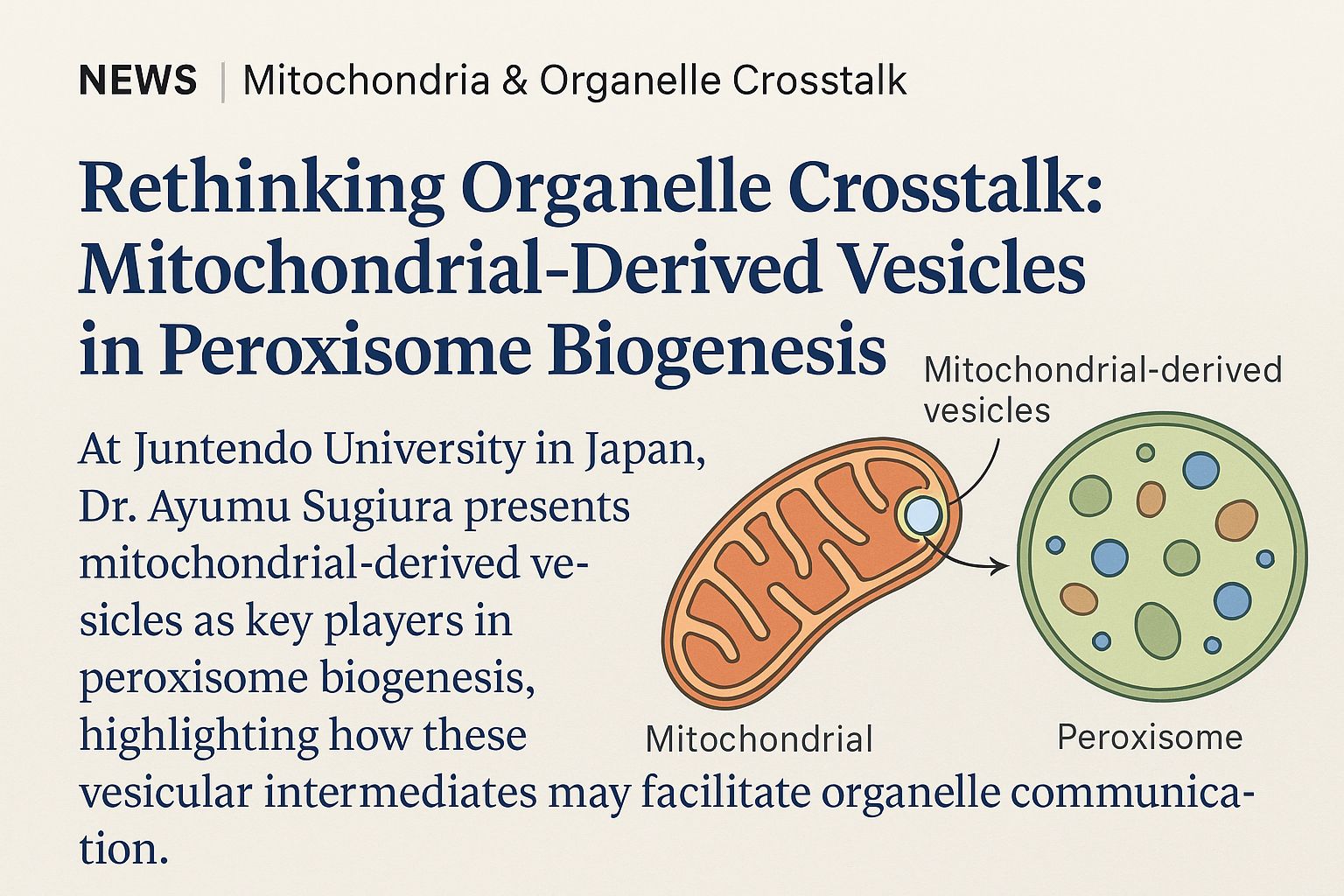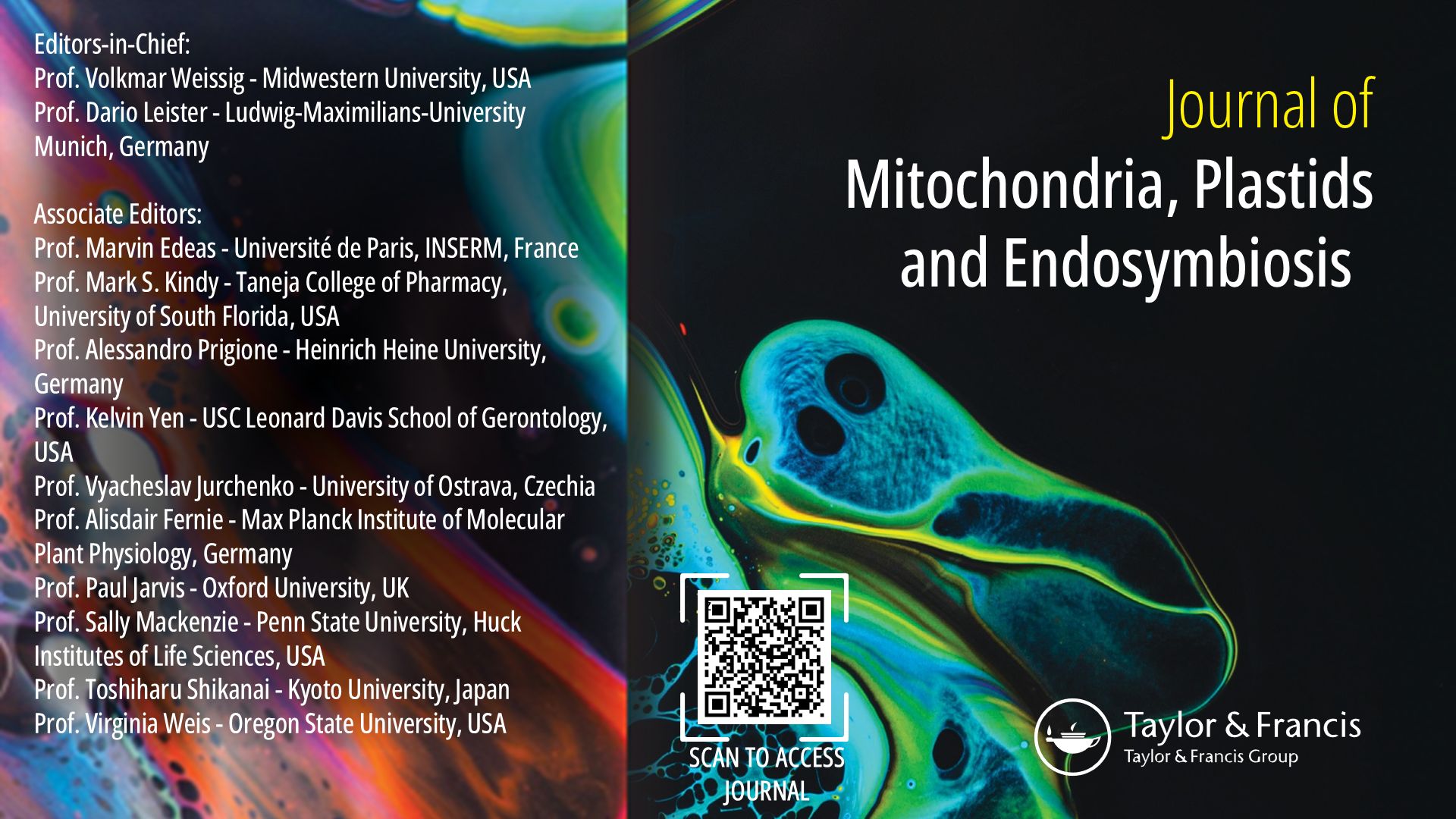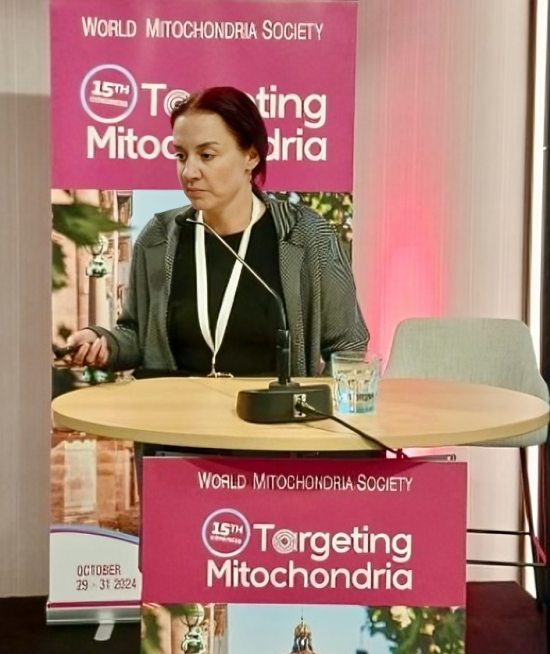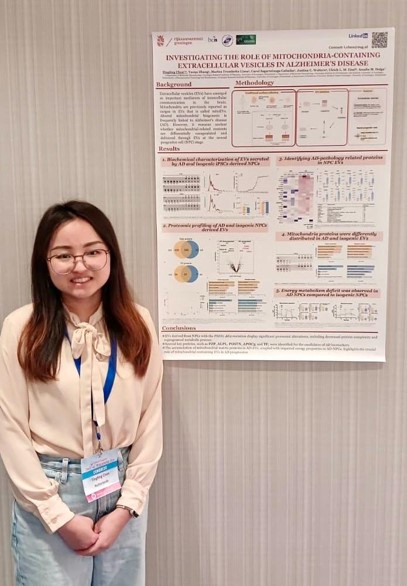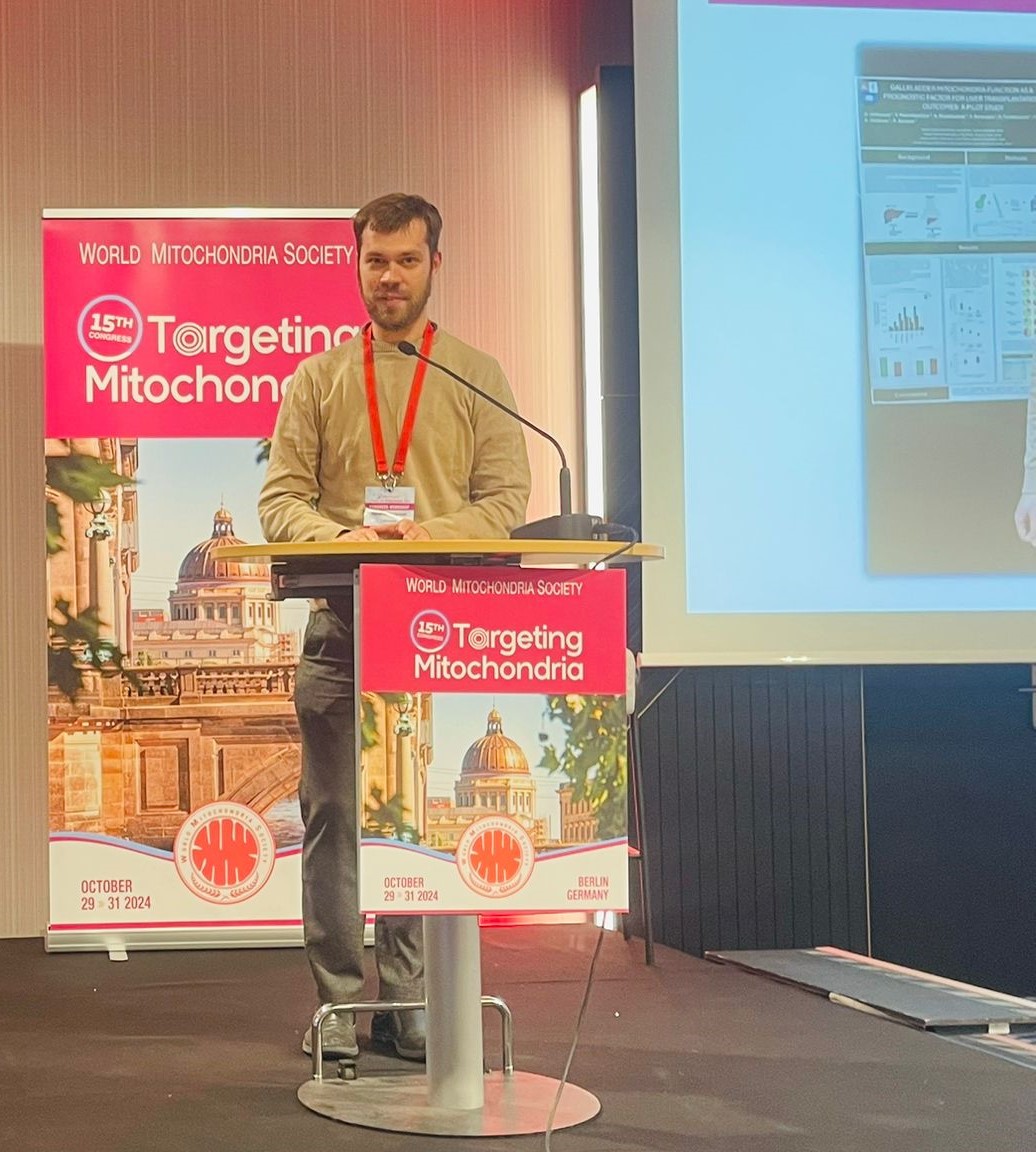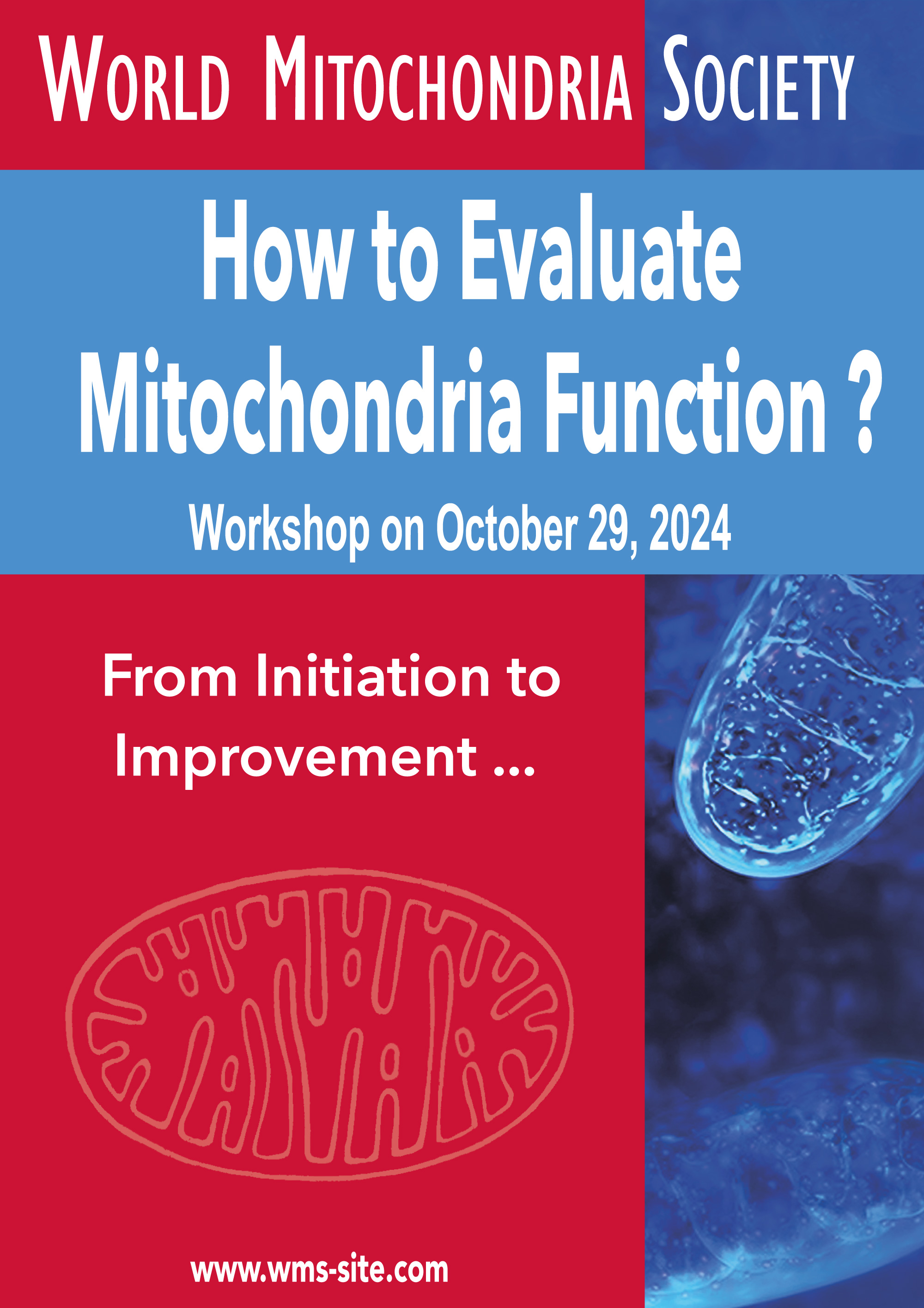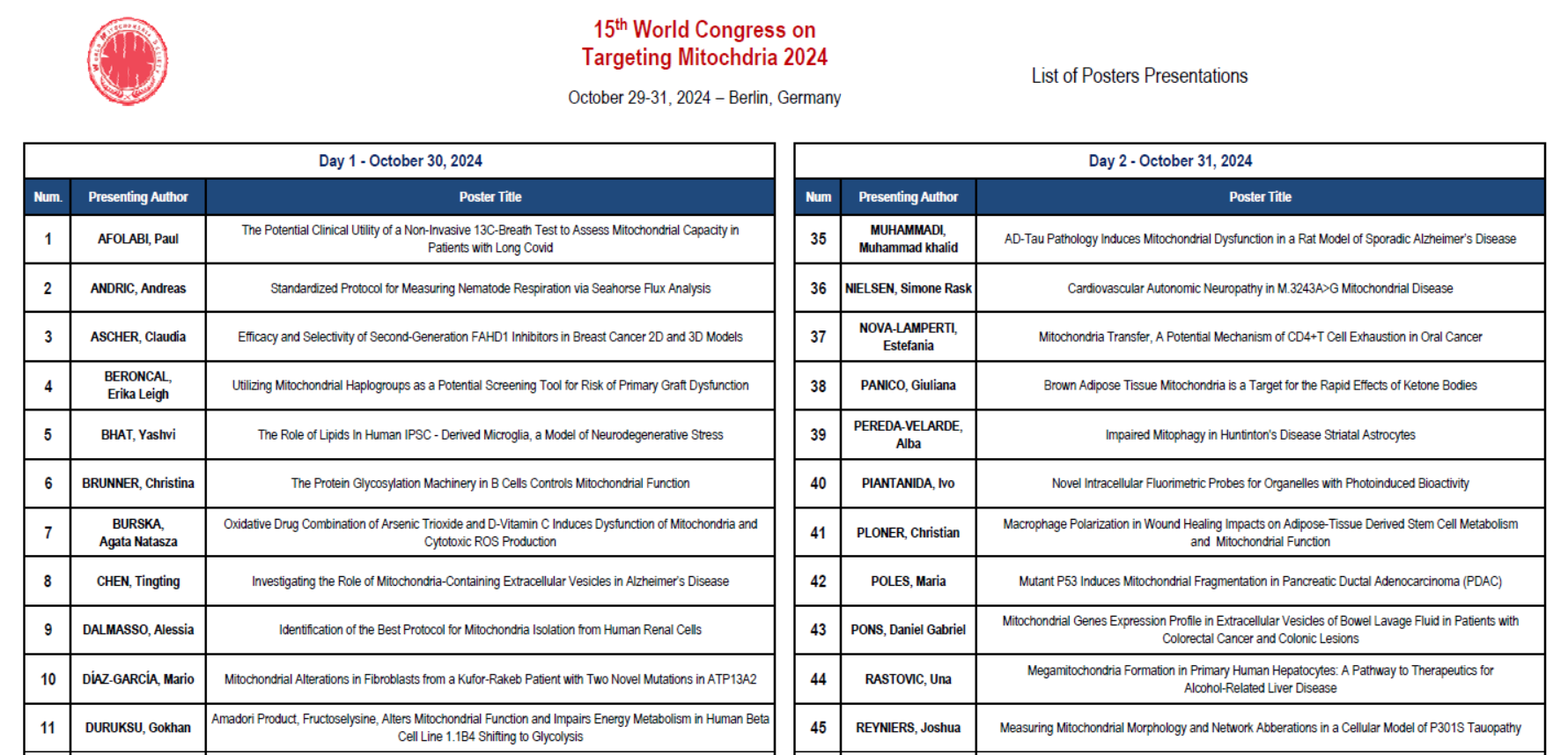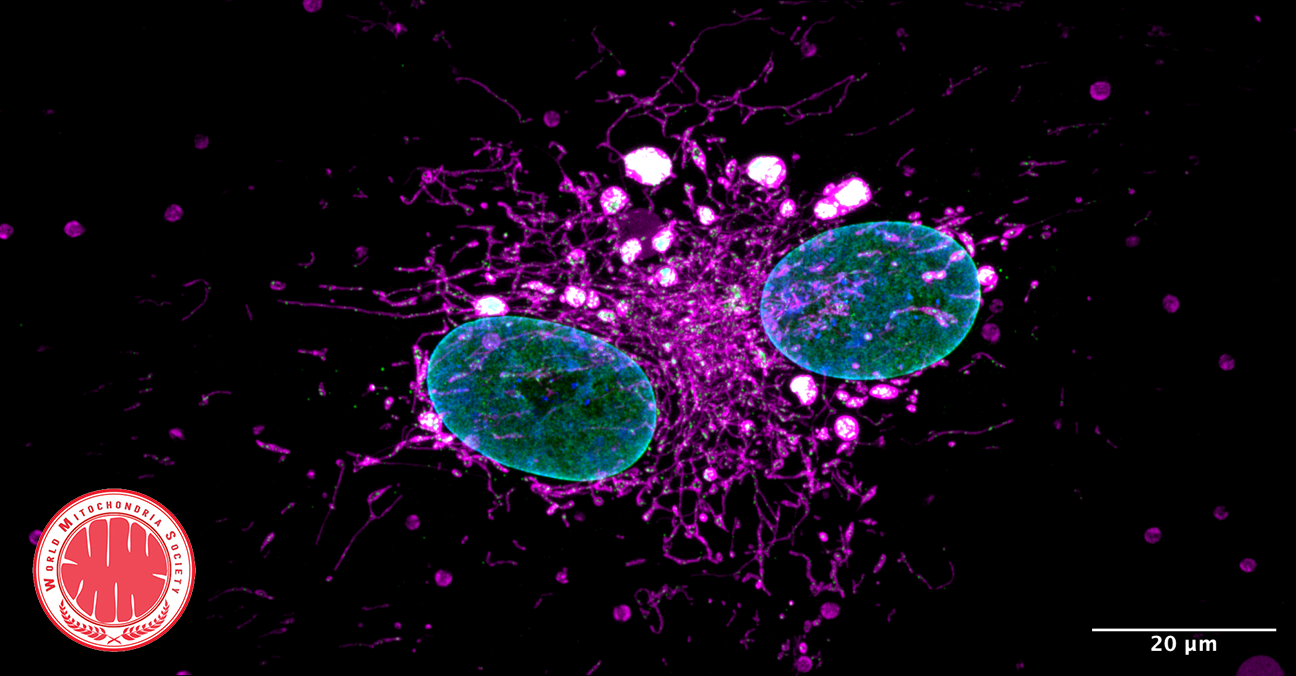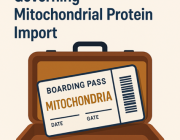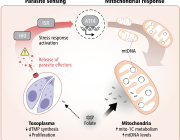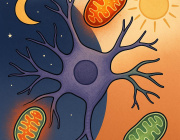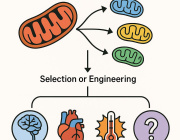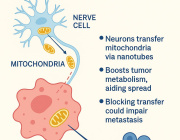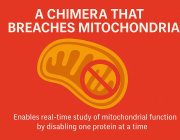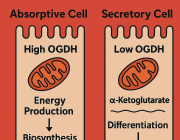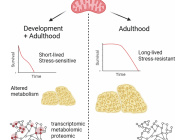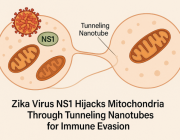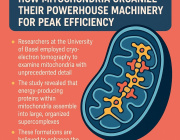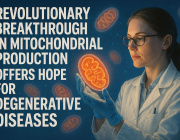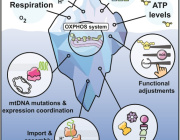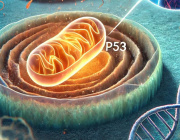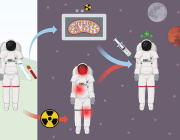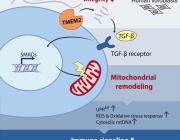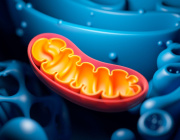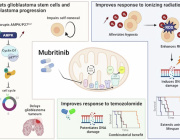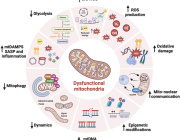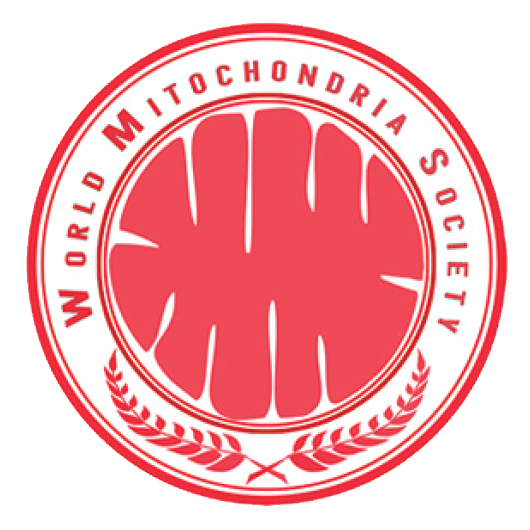New Outstanding Study Linking Post-Covid to Mitochondrial Damage

The World Mitochondria Society (WMS) congratulates Professor Douglas Wallace, and his team on the outstanding publication in yesterday's issue of Science, focusing on Post Covid and Mitochondria. It is truly impressive and represents a significant leap forward in understanding the strategic role of mitochondria and mitochondrial energetics in both health and diseases.
The WMS strongly believes that the implications of this study extend beyond Covid, encompassing all diseases linked to mitochondria.
This excellent study delved into the impact of SARS-CoV-2 on host mitochondria and gene expression. The research revealed that SARS-CoV-2 viral proteins have the potential to hinder oxidative phosphorylation (OXPHOS) and encourage glycolysis by binding to host mitochondrial proteins. In nasopharyngeal samples, decreasing viral titers were associated with the suppression of nuclear DNA (nDNA) – encoded mitochondrial OXPHOS genes. Additionally, the virus led to the activation of microRNA 2392, HIF-1α (which prompts glycolysis), and host immune responses, including the integrated stress response.
In autopsy tissues of COVID-19 patients, the virus was absent, yet mitochondrial gene expression had recovered in the lungs. However, suppressed nDNA mitochondrial gene expression persisted in the heart, kidney, and liver autopsy tissues, while mitochondrial DNA transcription was activated, and immune defense pathways were engaged. In early SARS-CoV-2 infection in hamsters, the lung's mitochondrial gene expression remained largely unaffected, but perturbations were observed in the cerebellum and striatum. During the mid-phase of infection in mice, lung mitochondrial gene expression started to recover. This data suggests that during the initial viral peak, a systemic host response takes place, followed by the virus hindering mitochondrial gene transcription and prompting glycolysis, leading to antiviral immune responses. Despite lung recovery, mitochondrial dysfunction persists in the heart, kidney, liver, and lymph nodes, potentially contributing to severe COVID-19 symptoms.
We will discuss during the World Mitochondria Society Annual Meeting this October in Berlin how to enhance mitochondrial function and strategies to target mitochondrial energetics in health and disease.
Media contact:
World Mitochondria Society
This email address is being protected from spambots. You need JavaScript enabled to view it.
Targeting Mitochondria 2023 Congress
October 11-13, 2023 - Berlin, Germany
wms-site.com
Maternal and Fetal Mitochondrial Gene Dysregulation in Hypertensive Disorders of Pregnancy
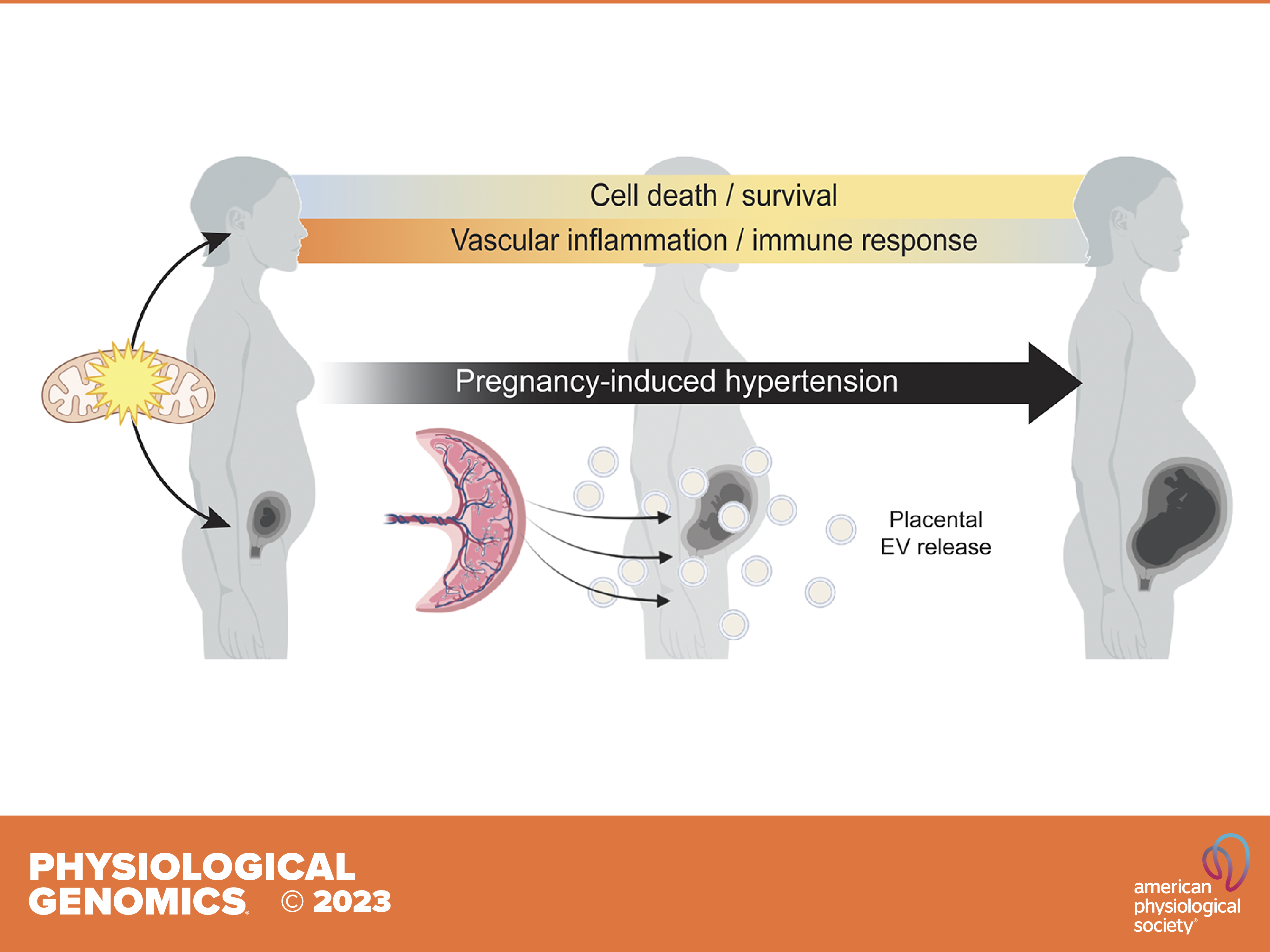
Mitochondrial dysfunction has been implicated in pregnancy-induced hypertension (PIH). The role of mitochondrial gene dysregulation in PIH, and consequences for maternal-fetal interactions, remain elusive.
In their new study, Nicole R. Phillips (University of North Texas Health Science Center), Styliani Goulopoulou (Loma Linda University) and their colleagues investigated mitochondrial gene expression and dysregulation in maternal and placental tissues from pregnancies with and without PIH.
Further, they measured circulating mitochondrial DNA (mtDNA) mutational load, an index of mtDNA integrity. Differential gene expression analysis followed by Time Course Gene Set Analysis (TcGSA) was conducted on publicly available high throughput sequencing transcriptomic data sets. Mutational load analysis was carried out on peripheral mononuclear blood cells from healthy pregnant individuals and individuals with preeclampsia.
Thirty mitochondrial differentially expressed genes (mtDEGs) were detected in the maternal cell-free circulating transcriptome, whereas nine were detected in placental transcriptome from pregnancies with PIH. In PIH pregnancies, maternal mitochondrial dysregulation was associated with pathways involved in inflammation, cell death/survival, and placental development, whereas fetal mitochondrial dysregulation was associated with increased production of extracellular vesicles (EVs) at term. Mothers with preeclampsia did not exhibit a significantly different degree of mtDNA mutational load.
The reported findings support the involvement of maternal mitochondrial dysregulation in the pathophysiology of PIH and suggest that mitochondria may mediate maternal-fetal interactions during healthy pregnancy.
In summary, this study identifies aberrant maternal and fetal expression of mitochondrial genes in pregnancies with gestational hypertension and preeclampsia. Mitochondrial gene dysregulation may be a common etiological factor contributing to the development of de novo hypertension in pregnancy-associated hypertensive disorders.
Image credits: Ricci et al. Physiological Genomics (2023)
Targeting Mitochondria 2023, this October, will shed light on the latest discoveries related to mitochondria. Submit a related abstract.
Media contact:
World Mitochondria Society
This email address is being protected from spambots. You need JavaScript enabled to view it.
+33-1-5504-7755
Targeting Mitochondria 2023 Congress
October 11-13, 2023 - Berlin, Germany
wms-site.com
Hydrogen Sulfide: A Promising Healthy ageing Therapeutic When Specifically Targeted Within Cells
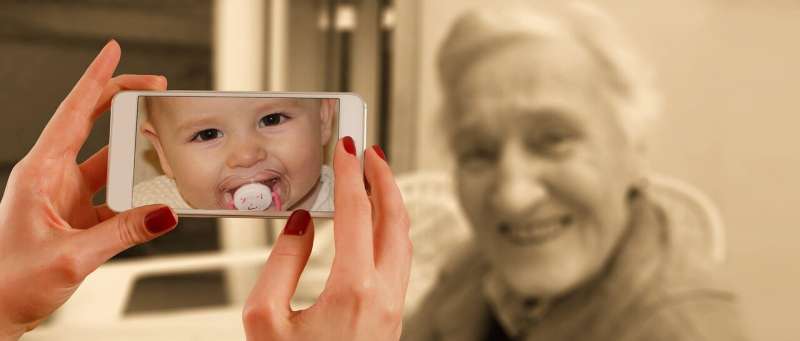
News Release, World Mitochondria Society, Berlin - Germany – August 1, 2023
Future therapies to help people live healthy lives for longer could be developed from drugs that release tiny amounts of the gas hydrogen sulfide (H2S), new research has indicated.
A study from the University of Exeter, funded by the US Army and charity The United Mitochondrial Disease Foundation, found that targeting tiny amounts of H2S to specific areas of cells in adult worms using a H2S-releasing molecule called AP39, greatly improved health and activity as they aged. The research, published in PNAS, concludes that targeting H2S specifically to the energy-generating machinery of cells (mitochondria) could one day be used as a healthy aging therapeutic.
The research team administered AP39 to some worms from birth, and to others after reaching adulthood. They found that this compound improved the integrity of mitochondria – the “power house” of cells, which produces our cells’ energy, and kept the worms’ muscles active and moving, even well into old age, and when given mid-way through their life-course.
A number of age-related conditions are linked to loss of mitochondrial function, including natural ageing, neurodegenerative diseases such as Parkinson’s and Alzheimer’s as well as muscular dystrophy and primary mitochondrial diseases.
The team also found a group of proteins that regulated how genes are expressed in ageing (transcription factors). There transcription factors were found to be specifically targeted by H2S. This insight may identify new targets for therapy in ageing and age-related conditions, particularly conditions affecting muscle.
Senior author Professor Tim Etheridge, of the University of Exeter, said: “Worms are a powerful genetic tool to study human health and disease and offer a strong platform to quickly identify new potential therapeutics. Diseases related to ageing take a huge toll on society. Our results indicate that H2S, administered to specific parts of the cell in tiny quantities, could one day be used to help people live healthier for longer
In previous research, the team had found that they could successfully target skeletal muscle with H2S in worms, and the new paper represents the first time this technique has been applied to natural ageing.
The University of Exeter has assigned the underlying technology to its spin-out MitoRx Therapeutics, which has developed next generation compounds with much better drug characteristics as potential medicines to combat diseases of ageing including neurodegenerative disorders such as Huntington’s disease as well as rare childhood conditions such as muscular dystrophy.
Co-author Professor Matt Whiteman, from the University of Exeter, said: “This study is not about extending life – it’s about living healthier lives well into older age. This could have huge benefits to society. We’re excited to see this research move to the next stages over the coming years, and hope it will one day form the basis of new treatments which we have the potential to develop with MitoRx.”
“We saw a small extension of lifespan in the worms that were targeted with H2S, and what’s unique here is that we extended healthspan – or the time they lived healthy lives. The worms still died, albeit later than normally expected, but they died very active and with young physiology.”
The paper is entitled ‘Mitochondrial sulfide promotes lifespan and healthspan through distinct mechanisms in developing versus adult treated Caenorhabditis elegans, and is published in PNAS.
Source: University of Exeter.
Targeting Mitochondria 2023, this October, will dedicate a whole session to "Mitochondria & Longevity: Towards Expanding Life Span". Submit a related abstract.
Media contact:
World Mitochondria Society
This email address is being protected from spambots. You need JavaScript enabled to view it.
+33-1-5504-7755
Targeting Mitochondria 2023 Congress
October 11-13, 2023 - Berlin, Germany
wms-site.com
Freiburg research team casts light on signal-dependent formation of mitochondria
Scientists reveal the transport of positively charged signal sequences through negatively charged groove
Known as the power plant of the cell, mitochondria are essential to human metabolism. Human mitochondria consist of 1,300 different proteins and two fatty biomembranes. The vast majority of mitochondrial proteins are produced with a cleavable transport signal and have to be actively transported into the mitochondria. Using biochemical and cell-biology experiments, a team of researchers have now shown for the first time precisely how mitochondrial proteins with signal sequences are imported into the mitochondria via a negatively charged, unique groove. Headed by Prof. Dr. Nils Wiedemann and Prof. Dr. Carola Hunte from the Medical Faculty at the University of Freiburg, and Prof. Dr. Martin van der Laan from the University of Saarland the work was carried out at the University of Freiburg’s Cluster of Excellence CIBSS – Centre for Integrative Biological Signalling Studies. Their results have been published in the science journal Nature.
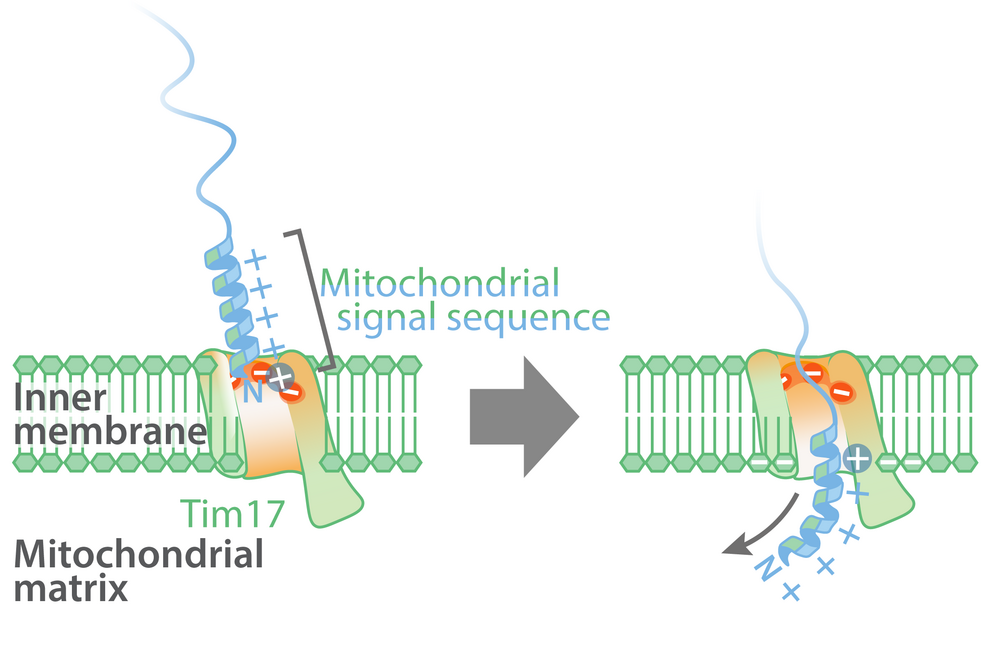
Model of the import of mitochondrial proteins with a signal sequence across the mitochondrial inner membrane at the Tim17 groove. Illustration: Laura Fielden
Transport mechanism is an important building block
“Forty years after the discovery of mitochondrial signal sequences, our experiments have now revealed the precise mechanism by which proteins are transported and the power stations of our cells are gradually built up,” says Wiedemann. “Information about the transport mechanism for mitochondrial proteins is an important component in basic cellular research.” Malfunctions of over 500 mitochondrial proteins cause a variety of diseases, so research into the mitochondria is hugely important to medicine.
It was already known that mitochondrial proteins were imported using the signal sequence translocase of the inner membrane (TIM) into the mitochondrial matrix. The two vital core subunits of this translocase are Tim17 and Tim23. Until now, it was assumed that mitochondrial proteins with signal sequences were transported across the inner membrane via a water-filled Tim23 channel. However, recent artificial intelligence-based structural predictions indicate that Tim23 does not form a channel. The research team has now been able to prove that mitochondrial proteins with signal sequences are actually imported into the mitochondria via a groove in the Tim17 protein.
Negatively charged groove in Tim17-protein
Most proteins that are transported into the mitochondria contain a complex molecular signal sequence which is positively charged and water-soluble on one side, and on the opposite side has fat-soluble molecular residues. In contrast to the positively charged side of the transport signal, the groove of Tim17 contains a strongly negatively charged region which is present in all Tim17 proteins, from yeast to humans.
The lead authors of the study, Dr. Laura Fielden and Dr. Jakob Busch from the Institute of Biochemistry and Molecular Biology at the University of Freiburg, employed functional in vitro transport experiments using chemically-marked proteins with isolated mitochondria to show that the negative charges in the groove of Tim17 interact with the positively charged signal sequences and are therefore essential to the transportation of mitochondrial proteins. Meanwhile the fat-soluble side of the mitochondrial signal sequences is aligned with the lipid membrane, enabling the transport of signal sequences at the interface between Tim17 and the mitochondrial inner membrane.
Basis for further research
“Now we have clarified this fundamental mechanism of mitochondrial proteins with a signal sequence at the interface to the biomembrane, we can understand why mitochondrial signal sequences have one positively charged side and one fat-soluble side and need this for their transportation,” Fielden explains, emphasising the importance of the results which can now serve as a basis for further research into mitochondria.
Source: Universität Freiburg
Targeting Mitochondria 2023, this October, will shed light on the latest discoveries related to mitochondria. Submit a related abstract.
Media contact:
World Mitochondria Society
This email address is being protected from spambots. You need JavaScript enabled to view it.
+33-1-5504-7755
Targeting Mitochondria 2023 Congress
October 11-13, 2023 - Berlin, Germany
wms-site.com
Study Shows Mitochondrial Transplantation Effective in Reversing Damage to Kidneys and Kidney Cells
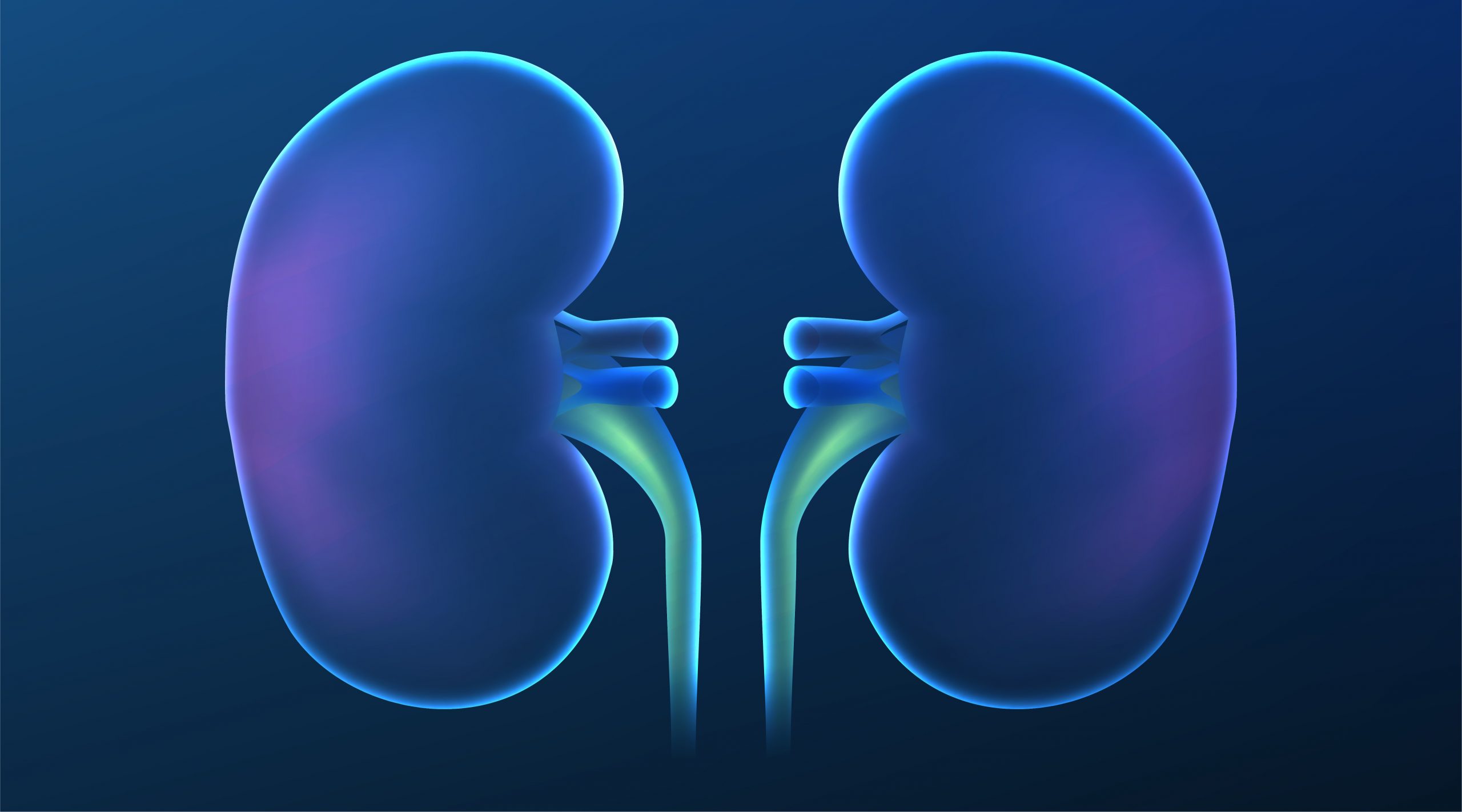
According to the National Kidney Foundation, more than 100,000 Americans are waiting for a kidney transplant, and the demand for donated kidneys far exceeds the supply. In fact, only 25,498 kidney transplants were performed in 2022, and kidney disease impacts 37 million people in the U.S.
But a new preclinical study, led by scientists at Wake Forest University School of Medicine, shows that a new technology called mitochondrial transplantation holds promise as a potential therapy that could change the kidney transplant landscape.
The study findings appear online in Annals of Surgery.
Mitochondrial transplantation is a regenerative medicine technology where healthy mitochondria are taken from cultured cells or tissue from organ donors and then injected into a diseased or damaged tissue or organ. Mitochondria produce the energy needed for a cell to function.
“Our study shows that this technology could transform renal transplant medicine,” said Giuseppe Orlando, M.D., Ph.D., an associate professor of surgery at Wake Forest University School of Medicine, a transplant surgeon at Atrium Health Wake Forest Baptist and principal investigator of the study. “Here, we provide evidence that mitochondrial transfer lessens the damage that renal cells or the kidneys may suffer from disease or injury.”
For the study, the research team collaborated with the University of Turin in Italy where scientists conducted preliminary tests in cultures of human proximal tubular cells, which are found in the kidneys and play an important in removing toxins. When the damaged cells were exposed to healthy mitochondria, cellular energy increased, and toxicity decreased.
“Essentially, the mitochondrial transplant was successful in reducing stress in the damaged kidney cells,” said Orlando, who is also a researcher at Wake Forest Institute for Regenerative Medicine.
Additional research by the Wake Forest team found that kidneys injected with healthy mitochondria showed signs of recovery.
Orlando said these results are significant because in the U.S., 20% of the kidneys procured for transplantation are eventually discarded because they are too damaged, and this potential new treatment may help.
“Based on these preliminary findings, I’m optimistic that mitochondrial transplantation could one day increase the number of transplantable organs,” Orlando said.
Orlando said this is especially true in a new type of organ donation called “uncontrolled donation after cardiac death,” an area of active research. In this setting, the kidneys do not receive adequate blood supply, and mitochondria and the kidneys are damaged. Orlando said mitochondrial transplantation could enable surgeons to repair and eventually transplant these organs, potentially saving thousands of lives. It has been estimated that this type of donation may make 20,000 new kidneys suitable for transplants each year in the U.S., Orlando said.
The next step is to validate these findings in a small pilot study.
This study was supported by the National Center for Advancing Translational Sciences, National Institutes of Health Grant No. UL1TR001420 and the Italian Ministry of Health and Research.
Source: Atrium Health Wake Forest Baptist
Image Credits: Image Credits: WangXiNa on Freepik
Dr. Orlando will be joining Targeting Mitochondria 2023 to give a talk entitled "Repairing Marginal Kidneys With Mitochondrial Transplantation: A New Powerful Tissue Engineering Tool That Will Change the Transplant Landscape". Submit a related abstract.
Media contact:
World Mitochondria Society
This email address is being protected from spambots. You need JavaScript enabled to view it.
+33-1-5504-7755
Targeting Mitochondria 2023 Congress
October 11-13, 2023 - Berlin, Germany
wms-site.com
More Articles...
- Inflammation Discovery Could Slow Aging, Prevent Age-Related Diseases: Strategic Role of Mitochondria
- Artificial Mitochondria: The Dream is Here
- Heart tissue heads to space to aid research on aging and impact of long spaceflights
- Distinct Longevity Mechanisms Across and Within Species & Their Association With Aging






